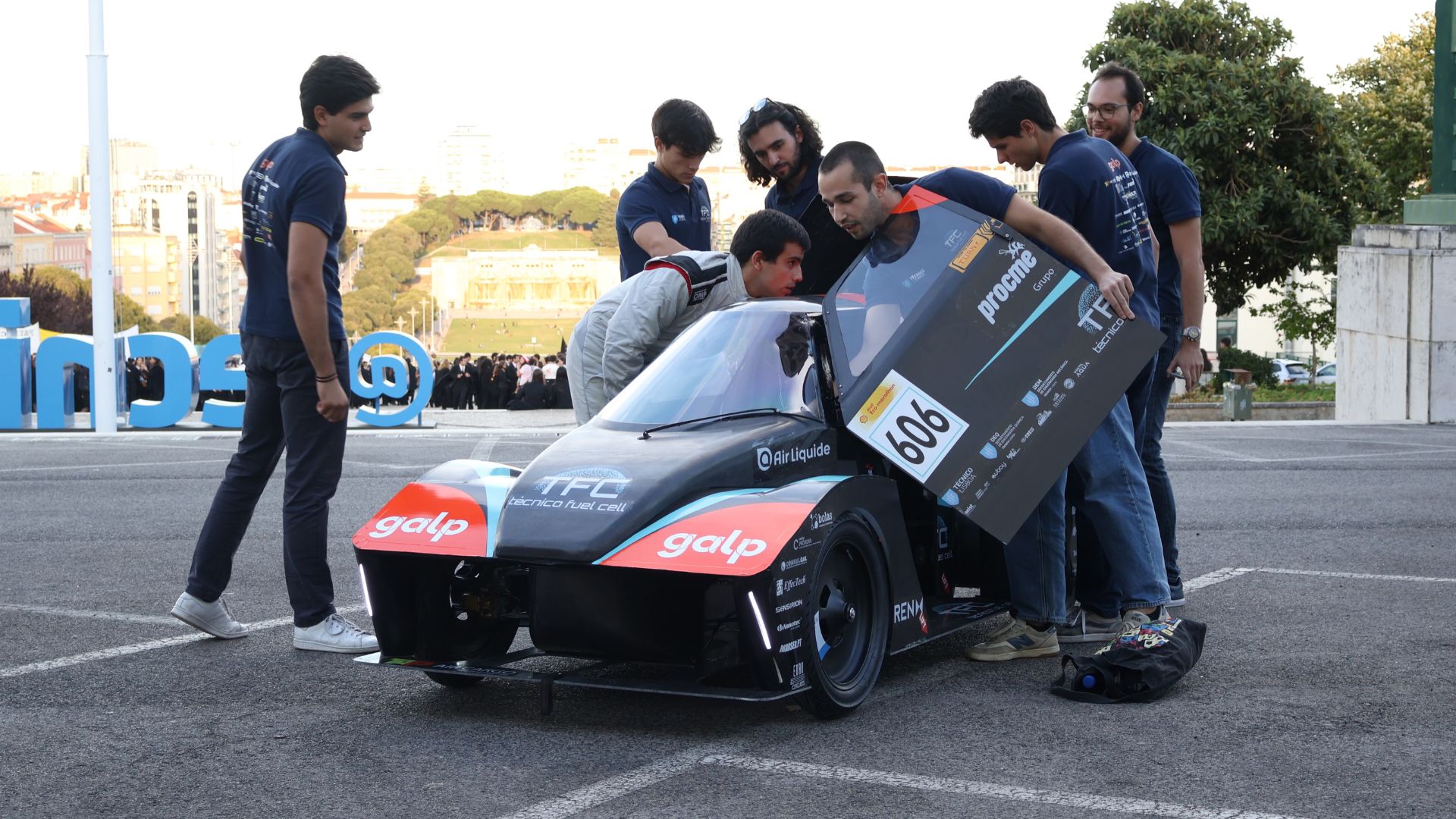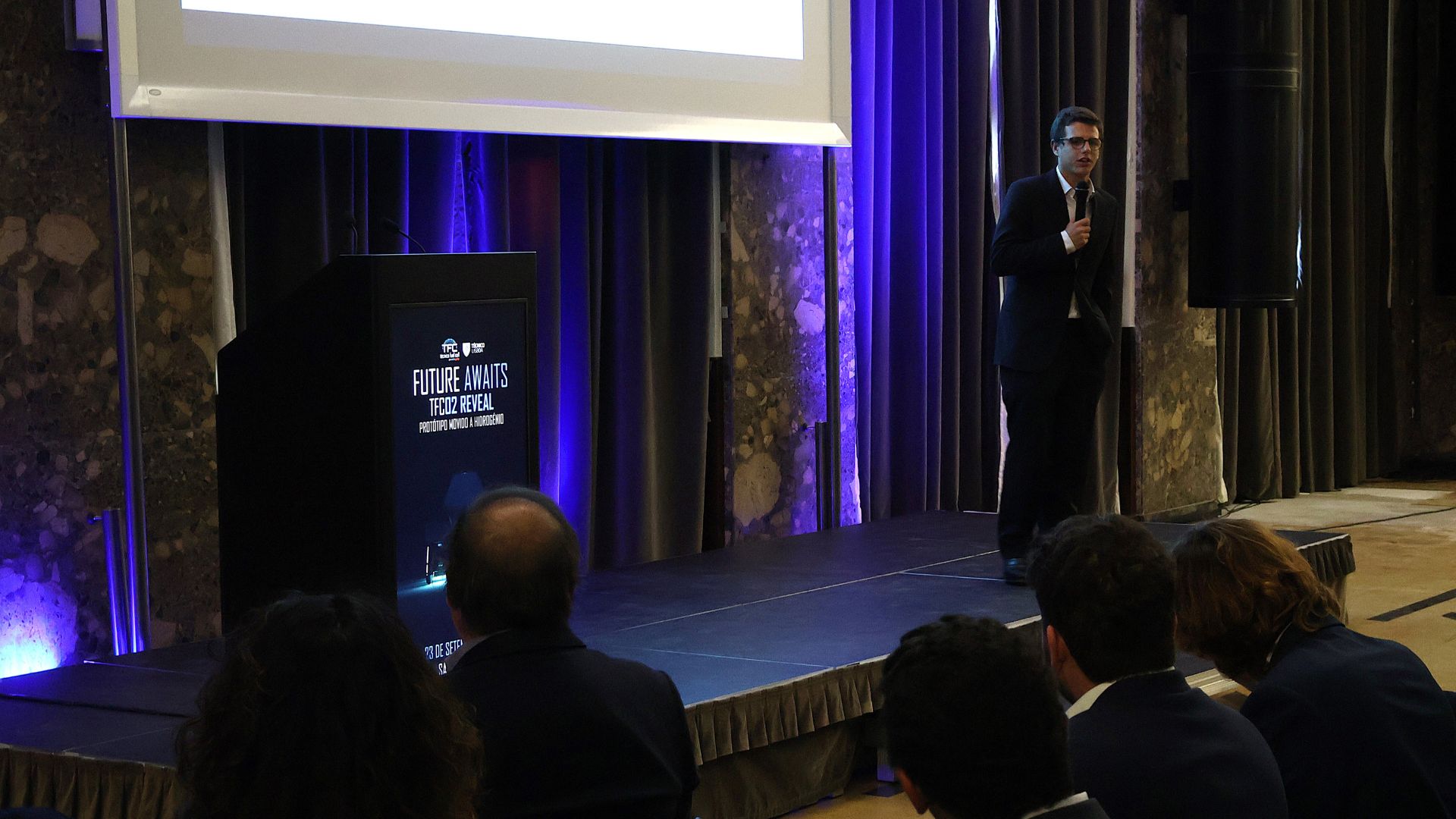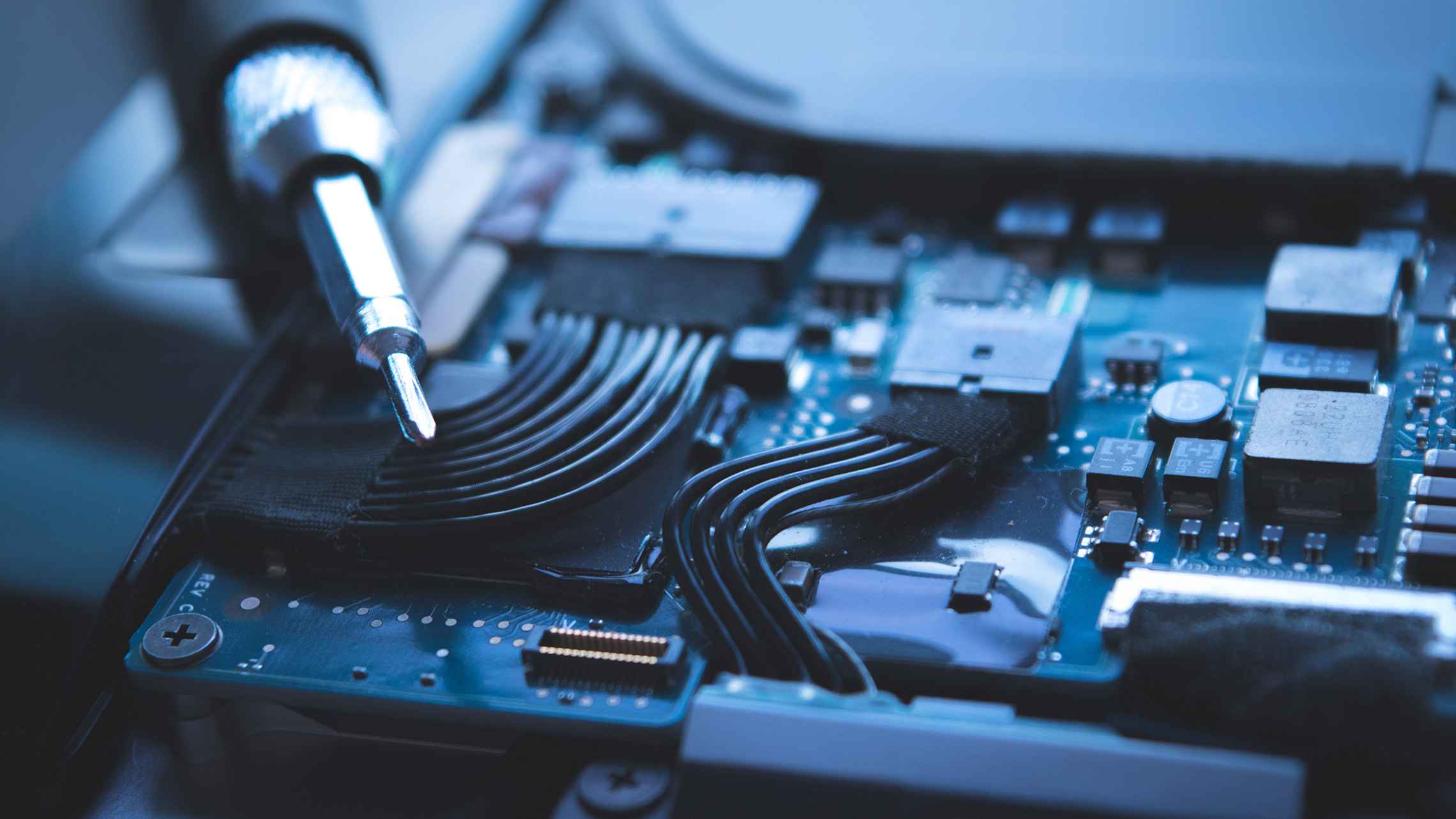Técnico Fuel Cell presents TFC02

On the past 23rd, Técnico Fuel Cell presented its latest hydrogen‑powered vehicle — the TFC02 — on the Alameda campus. After the launch of the TFC01 in 2024, the group reaffirmed its commitment to innovation through the realization of a new prototype that is more efficient and lighter.

Afonso Cruz, team leader and master’s student in Electrical and Computer Engineering, conducted the session, beginning by calling to the stage Rogério Colaço, President of Instituto Superior Técnico. Rogério Colaço emphasized the importance of students joining student groups, seeing them as opportunities to acquire knowledge beyond classes and apply it in practice. After congratulating the students, the president presented 3 challenges to the team: to document everything (so as to pass knowledge to future generations), to open the project to more students, and to maintain ambition and, above all, humility.
The ceremony also included remarks by Manuel Andrade, representative of Galp, who recognized the team’s merit.

Next, the heads of the departments of mechanical systems, electrical systems, and autonomous systems spoke about the work developed and the results achieved by the team.
Gonçalo Lázaro, leader of the TFC’s electrical systems department and master’s student in Electrical and Computer Engineering, began by recalling the week before the competition, during which the team detected some problems in one of the vehicle’s systems — stressing that the group had the ability to find alternatives in little time. In this regard, he recalled some of the conversations with colleagues where they discussed what defines a good engineer — not someone who gets the desired results on the first try, but someone who can easily adapt to the adversities that arise along the way. He then spoke a bit about the electrical systems developed: the vehicle uses a new telemetry system, which allows real‑time data transmission, and simpler, more robust, and lighter peripheral systems. He also highlighted that this is the team’s most efficient prototype, also featuring a more optimized propulsion system.

Técnico Fuel Cell also made reference to the TFC01 — “Camões,” explaining the origin of the name: besides the year of the 1st prototype’s launch coinciding with the 500th anniversary of the writer’s birth, the autonomous driving system uses only the left‑side camera, even though it is connected to two cameras. This system, added to the vehicle this year, is used in a race comprising three sectors: free circuit, obstacle track, and partially free parking (where the car detects the vacant spot), explained Diogo Valdrez, leader of the autonomous systems department and master’s student in Electrical and Computer Engineering.

From a future perspective, the group aims to develop the first fully autonomous and hydrogen‑powered vehicle.
The event ended with a demonstration outdoors, in front of the central pavilion.

